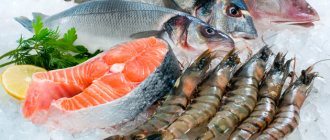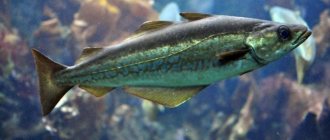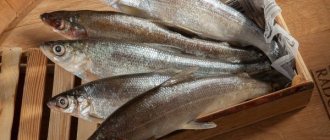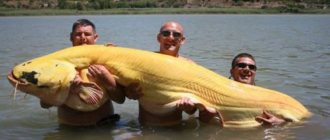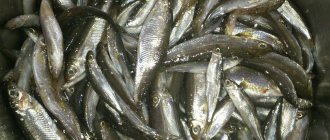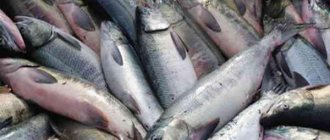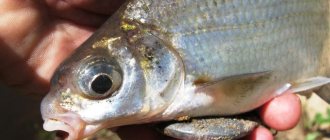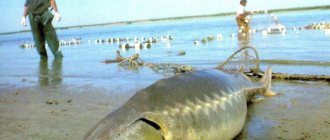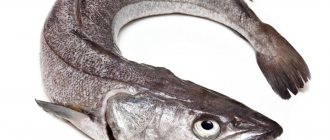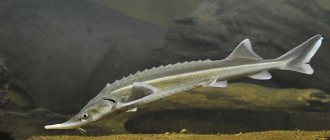Nelma belongs to the whitefish genus and is its largest representative, weighing up to 50 kilograms. Thanks to its whitish belly and silvery sides, it is classified as a white fish species.
The habitat extends to the cold waters of the Arctic Ocean, where salinity is not higher than 20 ppm. The body of the northern nelma fish is elongated, the mouth is large and with a decent number of small teeth.
Varieties
According to the place of settlement, two subspecies are distinguished: the true whitefish, which is located in the Caspian Sea, and the true nelma, which lives in the rather cold water of the mouths of northern rivers.
The first individual loves warmer water and is characterized by smaller size, although the appearance is identical. It reaches 1.3 meters in length and weighs about 20 kilograms.
Spreading
Fish, as mentioned earlier, swim in cold waters. Therefore, it is found in the Arctic and reservoirs connected to the Pacific Ocean. The main habitat is the Siberian and Far Eastern regions.
Looking at the entire world map, it can be found in Canadian and American (Alaska) rivers, that is, in areas with a similar Siberian climate.
Nelma is unevenly distributed. In some places its numbers are large, in others the fish can be counted on one hand. Why? Several factors play a role here:
- climate, which may differ at one latitude;
- nature of rivers - slow-flowing, fast-flowing;
- poaching;
- ecological situation.
Ecology is one of the main factors influencing its distribution in ecosystems. Hydroelectric power plants built in the habitat of nelma raise the temperature of the water and make it cloudy. The fish have to leave these places, the habitat is catastrophically reduced, as well as the spawning grounds. Water pollution is another common cause.
Nelma like wide, clean rivers with medium flows and cold, running water; some are not averse to settling in lakes. This species can be divided conditionally according to habitat into two types - river and lake-river. Representatives of the first group swim most of the time in large rivers of Siberia and near the coastline of the northern seas. The salinity of the water is not higher than 20 ppm. The latter live in lakes and leave them only when going to spawn.
Interestingly, while standing, she keeps her head against the flow. Nelma does not like depth; it tries to stay closer to the surface and does not fall below 2 meters. It prefers a sandy or pebble bottom. Avoids shallow waters and rapids, unlike other salmon. She does not enter such places even during the spawning period.
Nelma is a traveler; she travels very long distances (1500 km) and often swims to the south of Siberia.
Diet
By the way the nelma fish looks, you can understand that it is a 100% predator. Any small fish is suitable for hunting (smelt, vendace, etc.). Moving to spawn, on its way it destroys large volumes of schools of small things, stunning them with the help of a fin and eating them.
Does not disdain larvae, insects, crustaceans. Already 1 month old fry strive to feast on various young fish.
Seasonal behavior
With the beginning of rivers breaking up from ice, schools of sexually mature individuals begin to move from the Arctic Circle to spawning grounds. All summer they move upstream, gaining weight. Intense movement of fish in the rivers is observed in mid-July.
By September they reach the southeast of Siberia, where they stop to spawn in numerous rivers, keeping to the bottom. Nelma, living in inland lakes, spends their entire lives in them, and spawns in tributaries.
After spawning, it fattens up until the next summer and gradually slides down to the sea. Some individuals can remain in the channel for up to 3 years. The young live in spawning rivers for 2-3 years, and then descend into a large body of water.
Use as food
Let's consider the benefits and harms of nelma fish. In world cuisine there are many recipes using it:
- Fried breaded with vegetables
- First course (ear)
- Boiled with potatoes
Due to the absence of parasites, it is allowed to eat it raw, which is typical for oriental cuisine. Healthy and satisfying meat contains proteins, vitamins A, E, PP, B, as well as phosphorus, calcium, zinc, iron, and selenium.
It will be a suitable delicacy for those who are on a diet, as it is low in calories. A harmful effect is almost impossible, but you should be wary of artificially grown individuals. In this case, it is not always known what they were fed and where they were kept.
Calorie content of Nelma (whitefish), raw, (Alaska). Chemical composition and nutritional value.
Nutritional value and chemical composition of “Nelma (whitefish), raw, (Alaska).”
The table shows the nutritional content (calories, proteins, fats, carbohydrates, vitamins and minerals) per 100 grams of edible portion.
| Nutrient | Quantity | Norm** | % of the norm in 100 g | % of the norm in 100 kcal | 100% normal |
| Calorie content | 115 kcal | 1684 kcal | 6.8% | 5.9% | 1464 g |
| Squirrels | 22.25 g | 76 g | 29.3% | 25.5% | 342 g |
| Fats | 2.84 g | 56 g | 5.1% | 4.4% | 1972 |
| Water | 74.62 g | 2273 g | 3.3% | 2.9% | 3046 g |
| Ash | 1.58 g | ~ | |||
| Vitamins | |||||
| Vitamin B1, thiamine | 0.041 mg | 1.5 mg | 2.7% | 2.3% | 3659 g |
| Vitamin B2, riboflavin | 0.126 mg | 1.8 mg | 7% | 6.1% | 1429 g |
| Vitamin B4, choline | 108.9 mg | 500 mg | 21.8% | 19% | 459 g |
| Vitamin B5, pantothenic | 0.648 mg | 5 mg | 13% | 11.3% | 772 g |
| Vitamin B6, pyridoxine | 0.162 mg | 2 mg | 8.1% | 7% | 1235 g |
| Vitamin B9, folates | 9 mcg | 400 mcg | 2.3% | 2% | 4444 g |
| Vitamin B12, cobalamin | 5.9 mcg | 3 mcg | 196.7% | 171% | 51 g |
| Vitamin E, alpha tocopherol, TE | 0.44 mg | 15 mg | 2.9% | 2.5% | 3409 g |
| gamma tocopherol | 0.01 mg | ~ | |||
| Vitamin RR, NE | 2.12 mg | 20 mg | 10.6% | 9.2% | 943 g |
| Betaine | 123.7 mg | ~ | |||
| Macronutrients | |||||
| Potassium, K | 390 mg | 2500 mg | 15.6% | 13.6% | 641 g |
| Calcium, Ca | 140 mg | 1000 mg | 14% | 12.2% | 714 g |
| Magnesium, Mg | 25 mg | 400 mg | 6.3% | 5.5% | 1600 g |
| Sodium, Na | 52 mg | 1300 mg | 4% | 3.5% | 2500 g |
| Sera, S | 222.5 mg | 1000 mg | 22.3% | 19.4% | 449 g |
| Phosphorus, P | 300 mg | 800 mg | 37.5% | 32.6% | 267 g |
| Microelements | |||||
| Iron, Fe | 0.5 mg | 18 mg | 2.8% | 2.4% | 3600 g |
| Manganese, Mn | 0.037 mg | 2 mg | 1.9% | 1.7% | 5405 g |
| Copper, Cu | 148 mcg | 1000 mcg | 14.8% | 12.9% | 676 g |
| Selenium, Se | 42.3 mcg | 55 mcg | 76.9% | 66.9% | 130 g |
| Zinc, Zn | 0.6 mg | 12 mg | 5% | 4.3% | 2000 g |
| Essential amino acids | |||||
| Arginine* | 1.31 g | ~ | |||
| Valin | 1 g | ~ | |||
| Histidine* | 0.52 g | ~ | |||
| Isoleucine | 0.86 g | ~ | |||
| Leucine | 1.52 g | ~ | |||
| Lysine | 1.82 g | ~ | |||
| Methionine | 0.63 g | ~ | |||
| Threonine | 0.94 g | ~ | |||
| Tryptophan | 0.21 g | ~ | |||
| Phenylalanine | 0.85 g | ~ | |||
| Nonessential amino acids | |||||
| Alanin | 1.4 g | ~ | |||
| Aspartic acid | 2.07 g | ~ | |||
| Glycine | 1.5 g | ~ | |||
| Glutamic acid | 2.95 g | ~ | |||
| Proline | 1.15 g | ~ | |||
| Serin | 0.85 g | ~ | |||
| Tyrosine | 0.68 g | ~ | |||
| Cysteine | 0.2 g | ~ | |||
| Sterols (sterols) | |||||
| Cholesterol | 56 mg | max 300 mg | |||
| Saturated fatty acids | |||||
| Saturated fatty acids | 0.49 g | max 18.7 g | |||
| 14:0 Miristinovaya | 0.08 g | ~ | |||
| 16:0 Palmitinaya | 0.35 g | ~ | |||
| 18:0 Stearic | 0.06 g | ~ | |||
| Monounsaturated fatty acids | 1.08 g | min 16.8 g | 6.4% | 5.6% | |
| 16:1 Palmitoleic | 0.26 g | ~ | |||
| 18:1 Oleic (omega-9) | 0.54 g | ~ | |||
| 20:1 Gadoleic (omega-9) | 0.19 g | ~ | |||
| 22:1 Erucic (omega-9) | 0.08 g | ~ | |||
| 24:1 Nervonic, cis (omega-9) | 0.01 g | ~ | |||
| Polyunsaturated fatty acids | 0.7 g | from 11.2 to 20.6 g | 6.3% | 5.5% | |
| 18:2 Linolevaya | 0.03 g | ~ | |||
| 18:3 Linolenic | 0.04 g | ~ | |||
| 18:4 Steoride Omega-3 | 0.01 g | ~ | |||
| 20:4 Arachidonic | 0.05 g | ~ | |||
| 20:5 Eicosapentaenoic acid (EPA), Omega-3 | 0.17 g | ~ | |||
| Omega-3 fatty acids | 0.62 g | from 0.9 to 3.7 g | 68.9% | 59.9% | |
| 22:5 Docosapentaenoic acid (DPA), Omega-3 | 0.08 g | ~ | |||
| 22:6 Docosahexaenoic acid (DHA), Omega-3 | 0.32 g | ~ | |||
| Omega-6 fatty acids | 0.08 g | from 4.7 to 16.8 g | 1.7% | 1.5% |
The energy value of Nelma (whitefish), raw, (Alaska) is 115 kcal.
Primary source: USDA National Nutrient Database for Standard Reference. Read more.
** This table shows the average levels of vitamins and minerals for an adult. If you want to know the norms taking into account your gender, age and other factors, then use the “My Healthy Diet” application.
